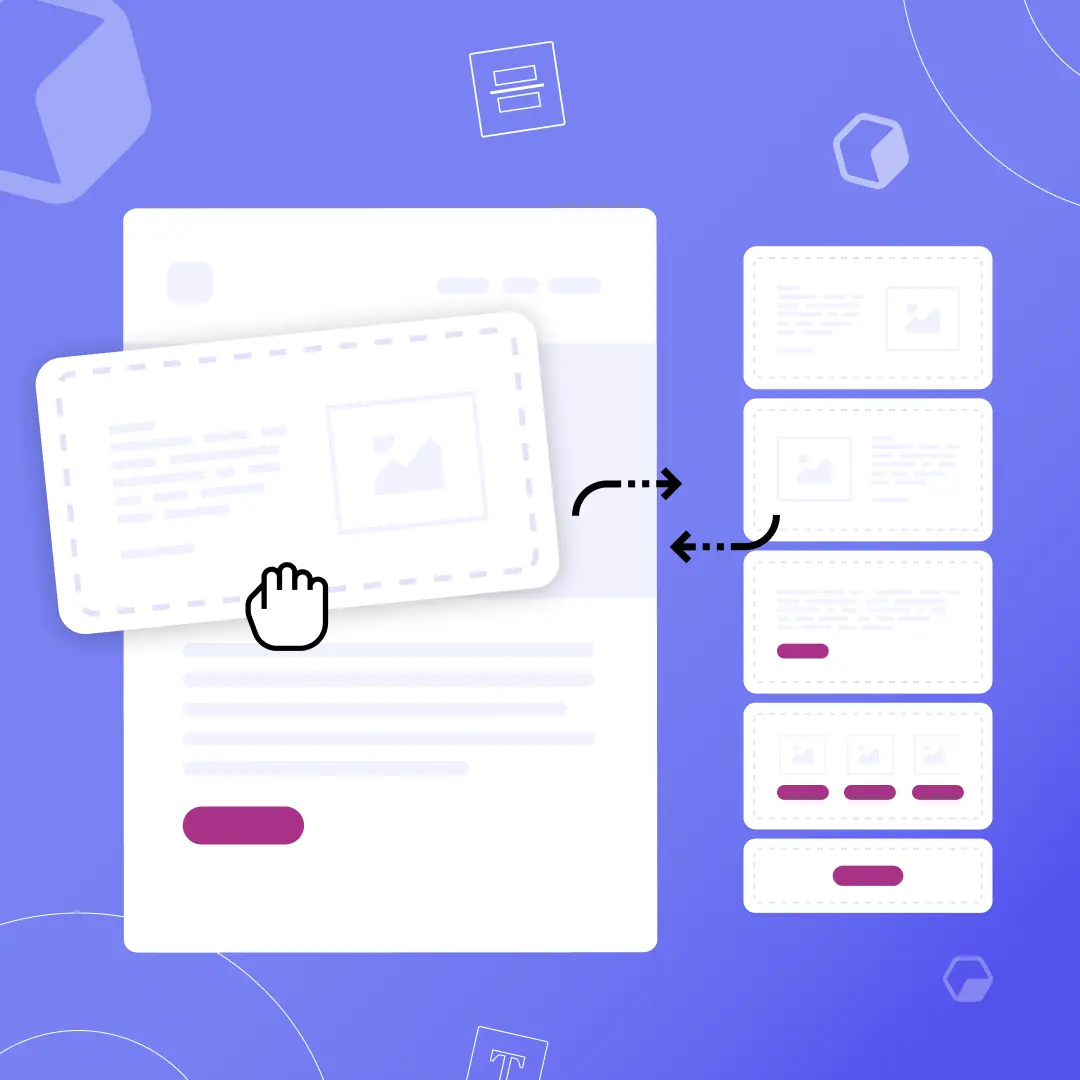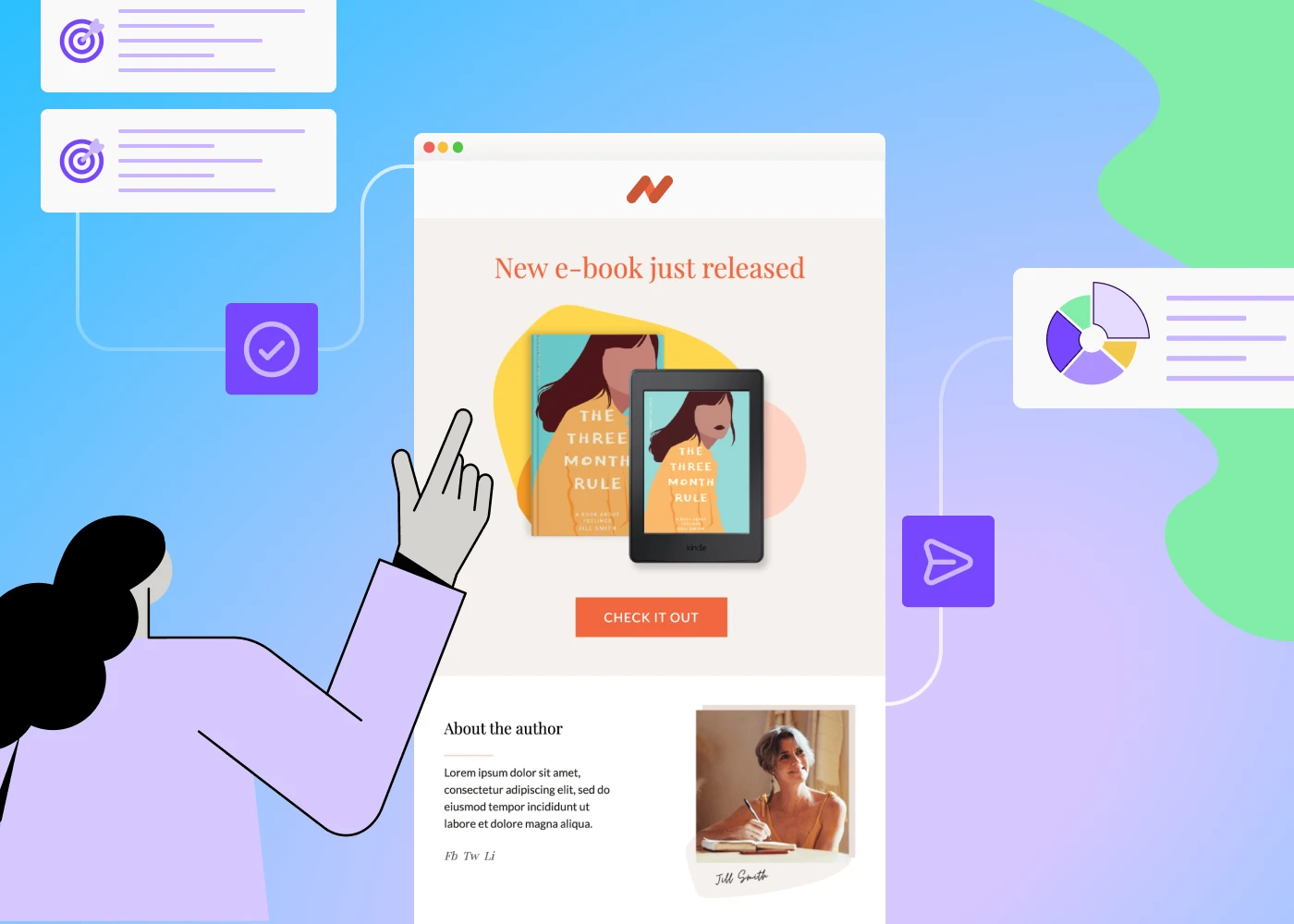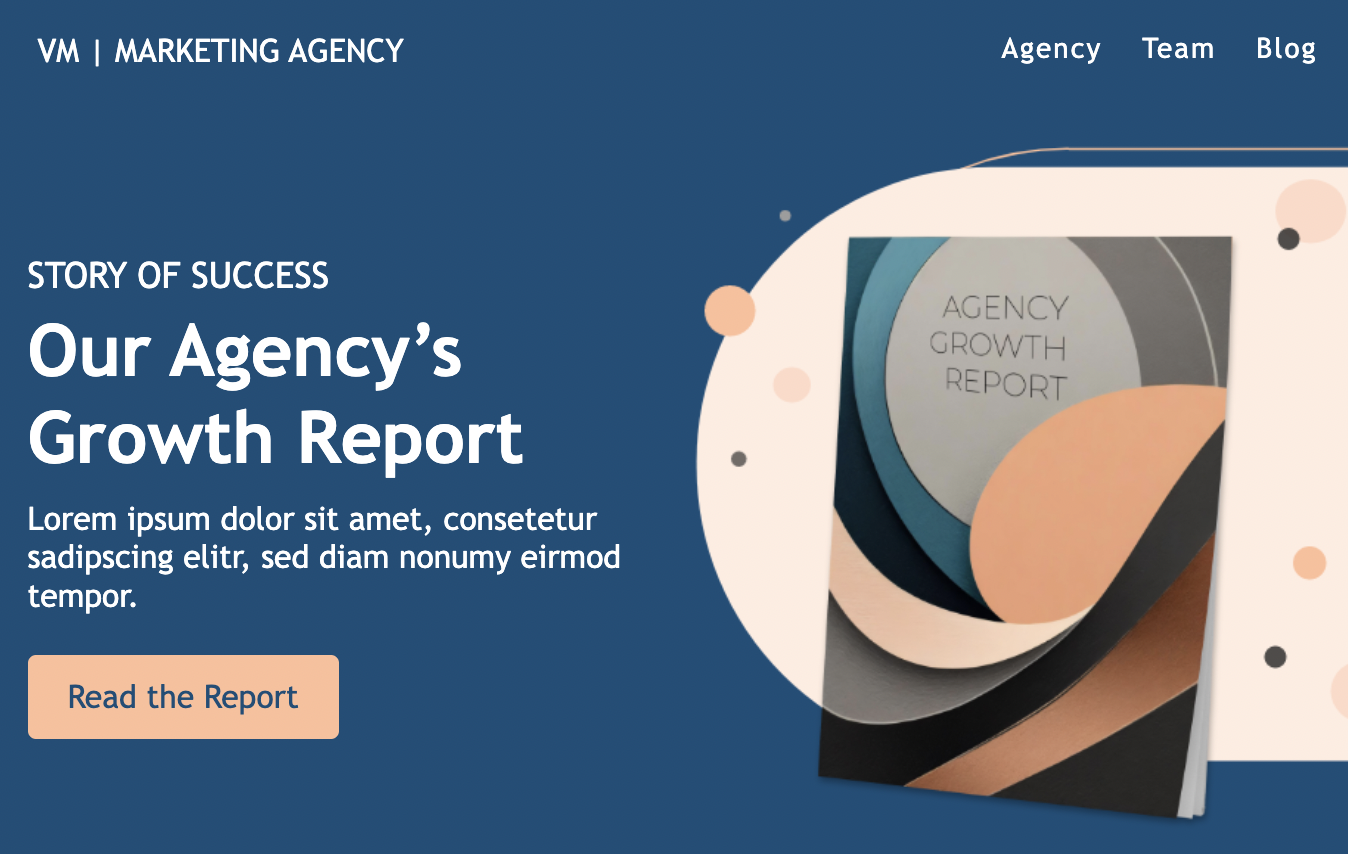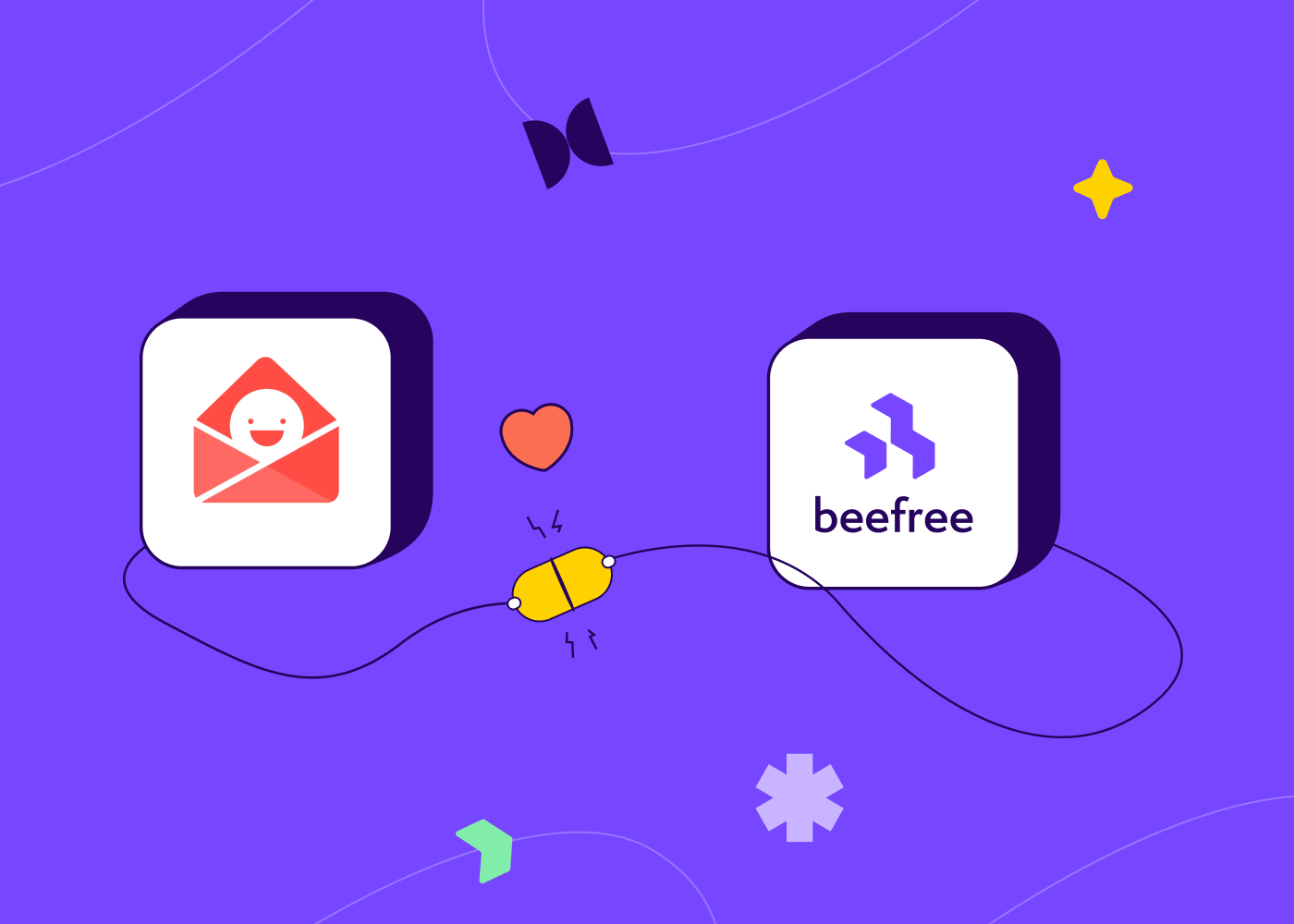Originally published on April 8, 2016. Last updated Nov 2, 2021.
Email continues to reign as the most powerful communication channel for your marketing campaigns. With ROIs at nearly $42 for every dollar, reaching your audience through email is your best move right now.
But many marketers still shy away from email because they don’t seem as time-efficient as social media posts.
How can you scale your email marketing campaigns faster? The answer lies with a quick, reliable design system called modular design.
What is modular design?
In email, modular design is a system of creating content-filled building blocks to stack and arrange in your emails. Its flexibility gives you the freedom to customize your email template without changing your blocks. This is what makes modular designs so appealing. Creating modular emails accelerates and scales your entire email marketing campaign.
In fact, it’s like playing a game of Tetris. In the game, you try to match tiles within the playing field to eventually win the game. With modular email design, you stack content filled blocks within an email template to ultimately scale your email marketing campaigns.
In order to reach our desired outcome of scaling, we need to understand what our building blocks are and what purpose they serve:
- Template: A compilation of modules that are tactically placed to design an email campaign. Templates may change depending on the goal of each email. A newsletter email may look different than a feature launch email, and so on. Think of the template as your base of the email, or the playing field in Tetris.
- Module: The module is where the content lies. These blocks will contain HTML text, videos, CTAs, and other content. They will serve different purposes and be rearranged or stacked in specific ways depending on the purpose of the email being sent. With this in mind, plan to use one for your header, footer, primary content, social media links and other necessary content.
Utilizing modules will allow you to drag and drop content blocks to quickly form your desired template. This system will level-up your emails, lighten your workload and get you up to speed.
Out with the old: Traditional email design is outdated
Traditional email templates aren't commonly used anymore. Using these templates throws more work on your plate. With a traditional template you will need to add, delete and reposition elements in your emails which makes your entire design process error-prone and slow-paced.
In fact, their lack of brand consistency gives off an unprofessional appearance, and that messiness could lead your emails straight to spam. With 45% of all emails sent being considered spam, this outdated email design style is not worth the risk.
Even rendering for mobile becomes more of a concern with this design style. Adding, deleting and repositioning your content will toy with how your email renders on all devices. This will also require more testing each time you tweak your content. This is another extreme, risk seeing as 42.3% of people will delete an email if it’s not optimized for mobile.
Modular design will cut your design time in half by standardizing module components so you can rearrange and use them over and over again in your emails. Plus they will be perfectly optimized for mobile due to their regulated structure.
Benefits of modular design
A modular email design reigns over traditional design styles due to its simplicity, flexibility, and other fundamental benefits including:
Brand consistency
Keeping your image, logo, brand colors and other brand components consistent from email to email is difficult if you’re starting from scratch every time you create a new email. Modular design breezes past this complex rebuilding process by allowing you to set and save brand assets to reuse with each new email. Using consistent brand elements in your emails helps subscribers learn your brand. Keep your brand consistent with standardized email modules.
Reuse your modules and tweak text or images within them if needed. This will ensure consistency while also giving freedom and time to be more creative with your designs.
Personalization
Modular design provides the right mix of images and text in emails. This gives room for more personalization. Each module can include personalized copy to better connect with your audience. Also, 82% of marketers have reported an increase in open rates through email personalization, which means designing modular emails will undoubtedly increase your email open rates. Flexibly personalize your header, live text or send-off directly in your modules.
Easier design process
The modules you create are easily stackable. Think of them as Tetris blocks - you can drag and drop them into each template you create. This simplified designing gives you more time to focus on other elements that might need more attention.
You are essentially creating a design library filled with modules that you will reuse and place into templates. Modular design allows you to throw modules into your template without a worry on how they will render. It’s like an email puzzle where you have all your pieces set and you just need to think about where they fit together to achieve that responsive email.
Saves time
A traditional layout often requires an extensive email brief. As a result, these can take hours to create leaving no time to implement new, bold creative elements or time to run multiple A/B tests.
With modular design, you will flexibly arrange modules and quickly tweak blocks for each new email. Send emails out to your subscribers that are personalized and segmented with this time-efficient, standardized method. Modular email design is a consistent way to quickly scale your email marketing campaign.
Low cost
Traditional email templates need to be purchased since they are unique to each campaign. Meanwhile, the modular email templates provide flexibility to rearrange its components, so you only need to purchase one of those and apply it to every campaign. To avoid all costs, try a free template from the BEE template catalog.
Switch to a modular design for email
Creating modular email templates for future campaigns is a fast and flexible process. Get started here:
Brainstorm your module library
An easy way to start outlining your library would be to categorize your modules by primary, secondary, and tertiary content, depending on where they sit in your modular email template.
The modules will be filled with very specific content that you will reuse and recycle depending on each campaign you choose to send.
- Primary modules. Contain the table of contents and header.
- Secondary modules. A subscriber's main focus for clicks. Contain the headline, main text, main images, CTAs.
- Tertiary modules. Contain the social links, quotes, event announcements, emojis, surveys and other closing components.
Creating an organized library will streamline your email design process where you can select and stack modules to create the email you need.
Categorize by campaign
Take your outline a step further and plan where modules will fit in each upcoming email campaign. To begin, ask yourself a couple questions to better understand how you want your module library to be organized.
- How can I categorize these emails? Are they for my newsletter, a feature launch or a welcome series?
- How do I want to personalize modules for each campaign?
- What do subscribers love about my current emails and what sections need improvements?
Answering these questions will help you arrange your module library to simplify your design process. The ready-made modules will be ready to place into your template while changing a couple text blocks or images if needed to fit the desired campaign.
Implement a modular design strategy
Knowing which modules go where is key to creating the best email experience for your subscribers. Make the module design process more efficient by thinking about:
- Standardizing your brand specifics: logo, colors, images.
- Determining if it’s an image-heavy or text-heavy email
- Optimizing for mobile design
- Knowing your purpose for sending the email
- Understanding which sections will be personalized to subscribers
Speed up your modular template designing by standardizing some of these elements and ideas into your premade modules.
Create email modules
As we now know, producing a library of modules will fast-track your design process. It’s a design system that will pay off long term and allow you to really leverage your email campaigns. Follow your outline and fill your modules with content that suits your needs.
Test your modular designs
The ready-to-go module library you created will also give you more time to test your emails. When ready, initiate multiple A/B tests and gain feedback faster. Once you receive that feedback, you can tweak elements within modules and send it out again to decide on what works best for your subscribers.
Try out modular design in BEE Pro
Adopting a modular email design strategy is undoubtedly the most efficient way to create responsive emails. Test your designs on your audience and implement a core set of modules to reuse and rearrange for each email campaign you send.
Try it in BEE Pro. Our drag-and-drop editor gives you the creative flexibility to quickly design and save your modules. Create email templates from scratch or try a free template from our catalog. Save time and create stand-out modular email designs for your next campaign.







